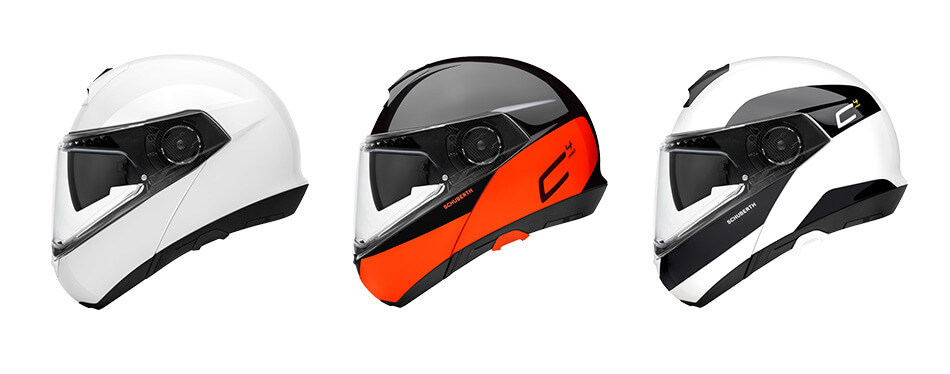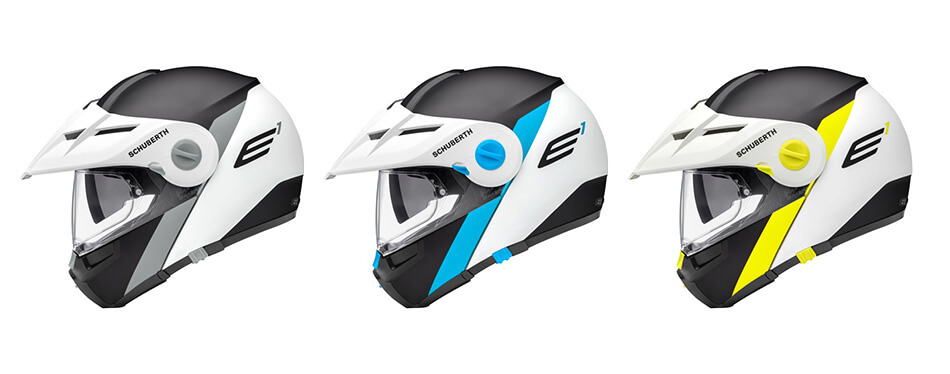You can permanently damage your hearing after just 15 minutes riding motorcycles.
Let's look at the quietest motorcycle helmet that can save your hearing, and what you can do to have a quieter ride.
I have tested 8 helmets from different manufactures.
There is no such thing as a silent motorcycle helmet, but we can get pretty close with a few good helmet choices.
These are the most popular helmets on the market with a proven track record in safety and quality, so you can make the best choice.
Let's get into it.
QUICK TIP - If you want the quietest riding experience possible:
- Use one of the helmets listed below
- Use earplugs at all times
- Use high windshields
Other quiet motorcycle helmets
The following helmets were recommended to me by other trusted riders. I have only gotten to test them briefly so no conclusive findings at the moment, but they are good helmets based on my experience from the few days I wore them. I have ordered them and will give them a real test.
Buyers Guide
Can you lose your hearing due to riding a motorcycle?
Yes.
Bikers are at a significant risk for permanent hearing loss.
Do you believe what the manufacturer says about how quiet their products are?
Not really, it is often marketing "quietest motorcycle helmet" jargon or just plain BS.
But fortunately, if you are aware of the reasons for motorcycle hearing loss, it can be easily prevented.
Summed up:
- Buy one of the quality quiet helmets listed above.
- Use earplugs all the time.
- Install a windscreen extension or a permanent bigger screen.
Hearing Loss Motorcycle Riding
Let’s get a deeper understanding on how you can lose your hearing. Here are some examples:
Decibels
60
95
110
Noise source
Normal conversation
Motorcycle riding
Chain saw, jackhammer, rock concert, symphony
“At 95 decibels (Motorcycle riding) damage to hearing is possible after about 50 minutes of exposure.”States the US Centers for Disease Control and Prevention
We are all exposed to high levels of sound at some point. But the duration of the time that you are exposed to high levels of sounds also matters.
Based on the US Occupational Safety & Health Administration, you can only legally work at 95 decibels for 4 hours.
“The US government's Occupational Safety and Health Administration (OSHA) warns that exposure to noise in excess of 100 dB is safe for only 15 minutes.”
Riding on a highway can measure up to 103dB!
What to Look out for When Buying a Quiet Motorcycle Helmet?
I have done all the research and testing for you. Any of the helmets above are the best quietest motorcycle helmet and they have all the premium features you would want.
Now, all you have to do is choose a color.
But if you really want another helmet and you’d like to know if it will be a quiet motorcycle helmet, these are the factors that you should keep in mind:
- Helmet fitting - Snug is good, but not suffocating nor painful.
- INC - Integrated noise cancellation systems.
- Insulation - or a sound proof motorcycle helmet. Did the manufacturer added custom noise reducing insulation? If they don't talk about it, then probably not.
- Independent seals - These will keep wind from slipping in between the seal and the visor.
- Visor snap close force - The more, the better.
- Shape of helmet - The rounder, the better. It’s safer, too.
- Parts - Less parts that protrude, the better.
- Padding under the chin - Make sure your under chin is covered up with padding.
- Vents whistling - Read the reviews. Do the vents make noise whenever it is open or close?
- Aerodynamics - Okay, this is a difficult one. A streamlined helmet may look aerodynamic but only a true lab setting can prove what's the best. Unless you have a wind tunnel in your garage, then the next best thing to do is to read reviews online or ask some people.
- Test ride? - The dealer may possibly have your size and may offer you to take the helmet for a test ride.
Motorcycle Helmet Noise Reduction
You can have the quietest helmet, but what if you want it to be quieter? Helmet noise reduction is possible and it is easy to achieve.
The best way to protect your hearing when riding a motorcycle is by wearing earplugs. It is a simple and cheap solution that works.
Here are some products listed from most effective and cheapest:
I bought 200 earplugs 35 decibel rating and they work perfectly. There’s no need to go higher because it’s crucial that you still have to hear the environment around you.
With so many earplugs, you can throw them away, lose them, or replace when they get dirty.
Understanding Where the Noise Comes From
There are many reasons why a helmet can be loud.
Let's look at where the noise typically comes from and how you can reduce overall noise:
- Muffler - The motorcycle you ride (Engine/muffler noise) Install a quieter muffler.
- Windscreen size - install a bigger wind screen on your bike or add an extension.
- Remove the windscreen - The windscreen may make more turbulence for your height
- Crosswinds - There’s not much you can do against mother nature. Use earplugs.
- Loose fitting helmet - add padding or a riding balaclava to pack it out.
- Open area under the chin - Add the manufacturer’s chin skirt or buy one. A Buff can also help reduce wind getting in under the helmet.
- Riding position - Move around and find the sweet spot. Ride upright or tuck in.
Final Word
There are several unnecessary things in life that you can skip buying to save money. But a good helmet is not one of those.
All the helmets in this review have been tested in house along with information sourced from thousands of reviews and recommendations. It's hard to decide which is the most quietest motorcycle helmet that suits everyone's style, but the helmets listed above are the best you can get.
A good quiet helmet is the key to keeping your hearing and head safe. If you are traveling on expressways or gunning it at speed, always wear soft closed form earplugs.
If you think there is a helmet that deserves to be on this list, leave a comment below and we can order it for testing.
Have a good (quiet) ride!
Glossary
INC - Integrated noise cancellation
Wind tunnel - Testing station for aerodynamics
Insulation - Special materials to reduce noise
E.Q.R.S. - (Emergency Quick-Release System) CWR-1 Shield System
Pinlock pins and lens insert - Anti Fog visors
Snell M2015 - Gold standard in helmet safety
DOT Certified - Helmet safety standard (USA)
Direct Fiber Processing (DFP) - SCHUBERTH’s manufacturing technique.
Turbulators - Protrusions that break/cut the airflow.
FCS - (Facial Contour Support) cheek pad design making it easy to take a helmet of but have padding under the jaw
Decibels - Sound rating scale
Anti Sound - Adding sound waves to counter ambient noise
Double D Ring - Two D shaped rings to connect webbing
Sources:
Centers for Disease Control and Prevention - The United Nations Motorcycle Helmet Study (PDF) - Shoei Helmets - Arai - Schuberth.com - Wikipedia.org Motorcycle helmet - crash.org.au Helmet Testing - Click here for links to sources
Rider, designer, and hustler. Adventurer and vagabond. Beer connoisseur. Conqueror of Africa, a survivor of bandits and anti-malaria crusader. I have been on the road for 15 years, traveling to far-flung lands on bike, horse or backpacking. Today, running a number of online ventures in the motorcycle industry. – Currently, Traveling in Asia.















